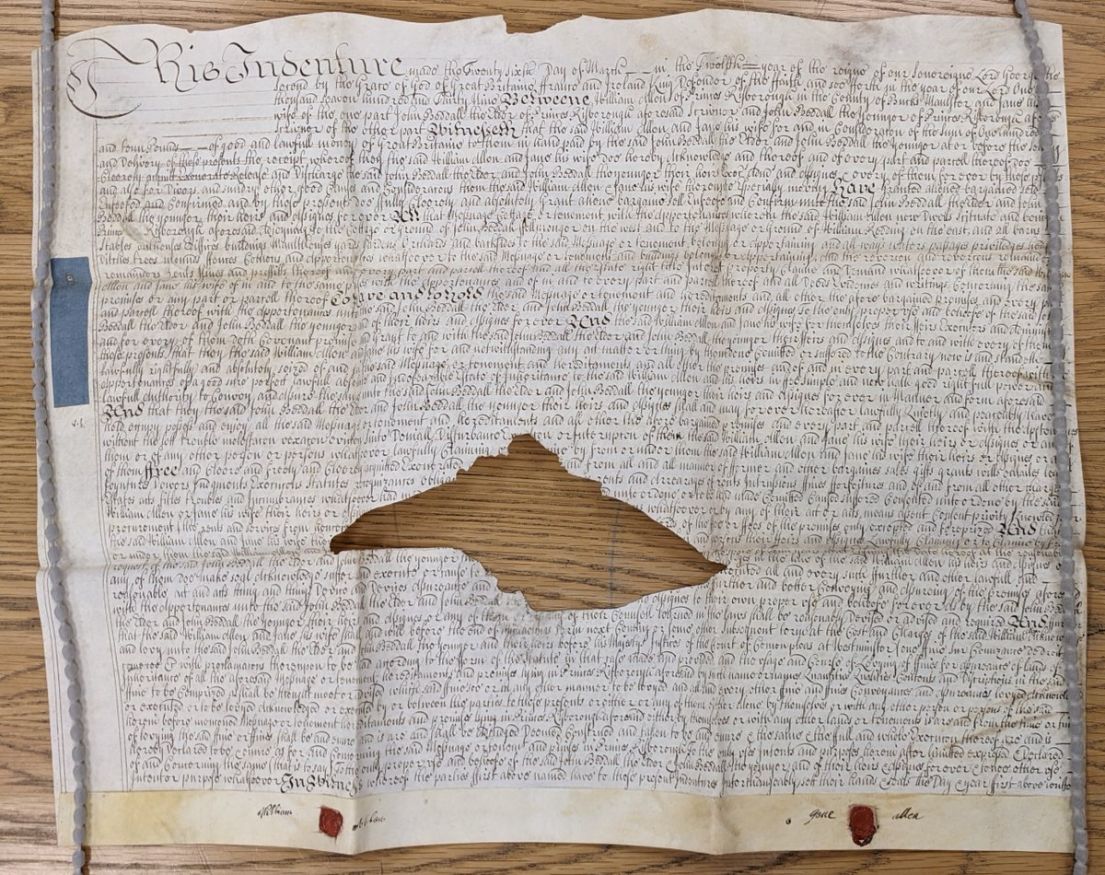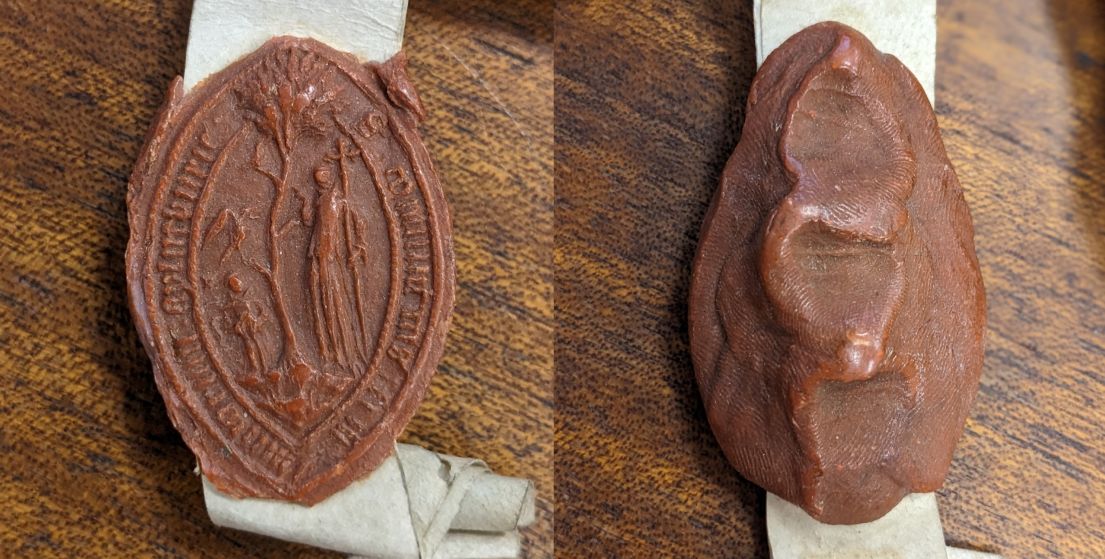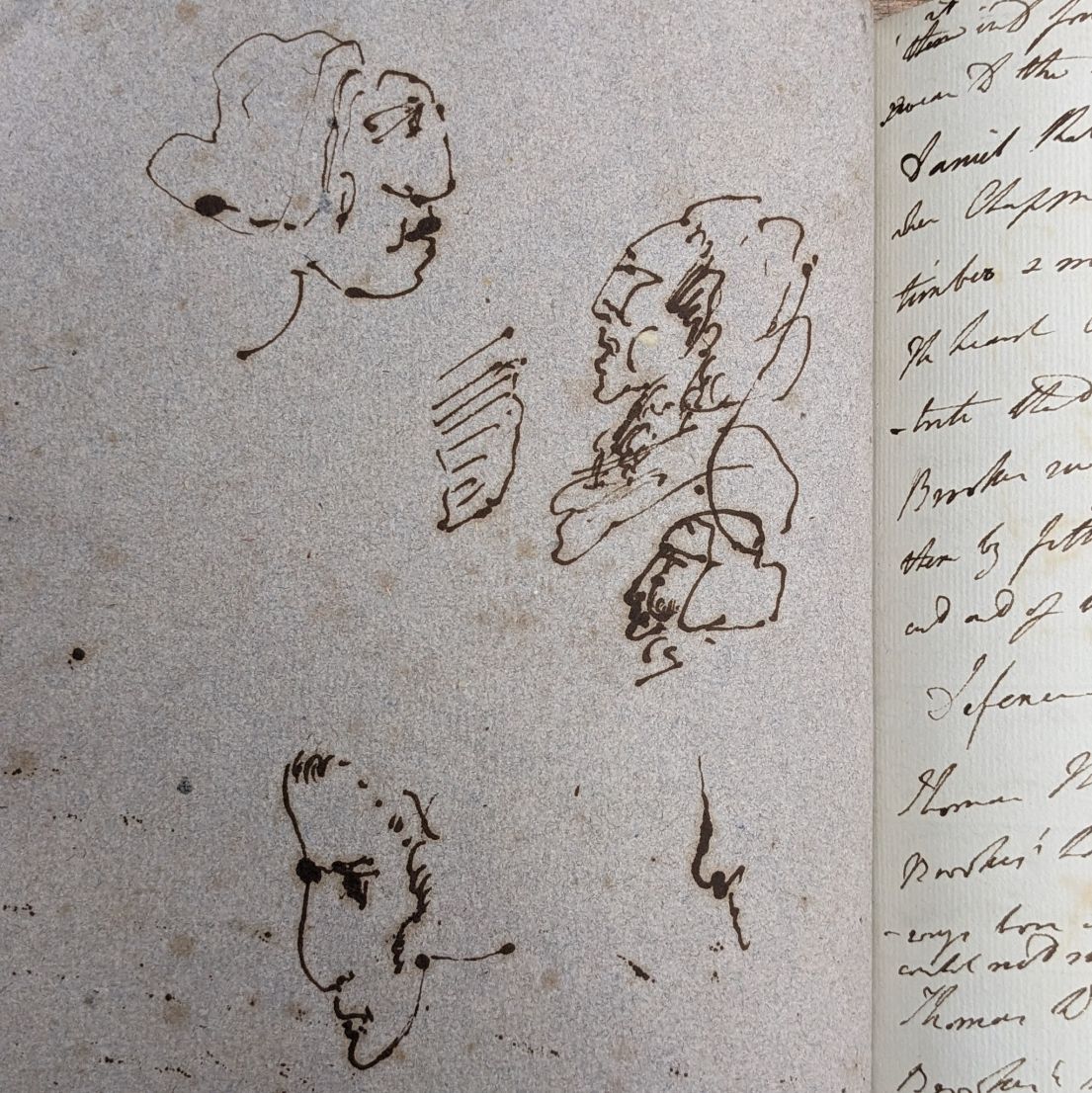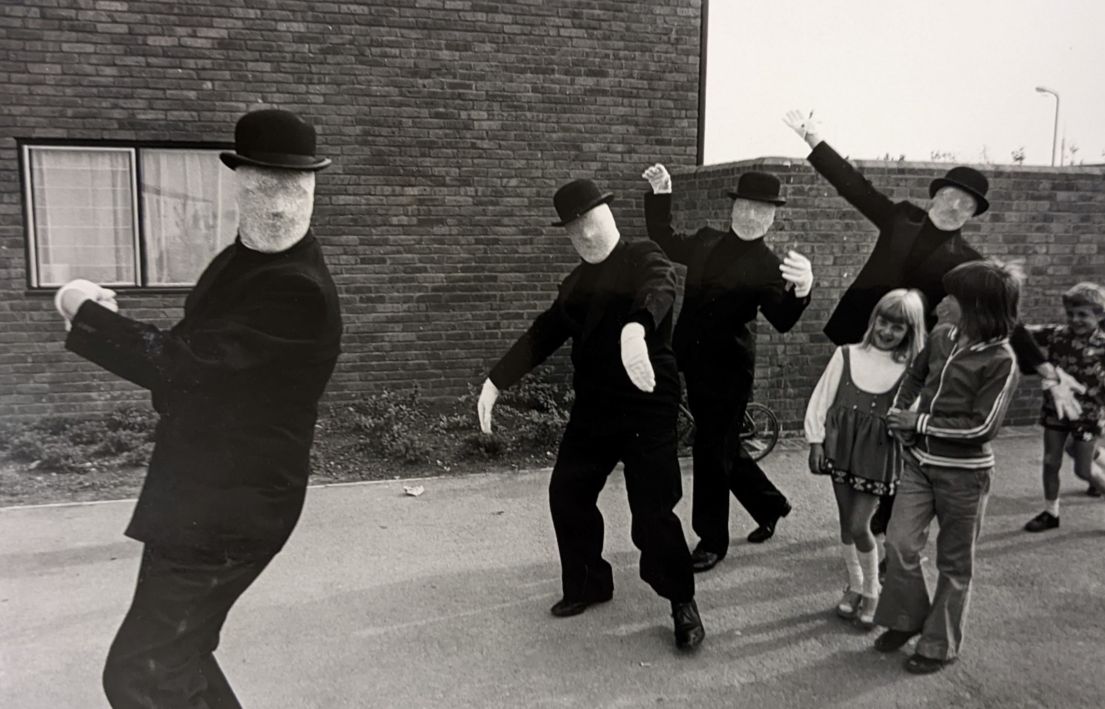
Archives are an invaluable tool to help us understand the past, and Buckinghamshire Archives is no exception. Since 1938, we have been looking after over 800 years of our county’s history so that future generations can learn from it. This includes maps, photographs, registers, and lots of material on the birth of the Paralympic games and the development of the new city of Milton Keynes. We have a professional team of archivists that help the public with queries on family history and help make sure history can be enjoyed by everyone.
We’re tucked away in the basement of the County Hall, Aylesbury. It’s a 200ft tall brutalist tower built by architect Fred Pooley in 1966, which has become an infamous landmark in the quaint market town, sometimes referred to locally as ‘Fred’s Fort’ or ‘Barad-dûr’ (a dark fortess in Lord of the Rings!). Luckily, the documents we look after are more interesting than where they’re kept! We have around 1.5 million documents kept safe on our shelves, but we’ve pulled out a handful of our more curious items here as a taster for you...
The dog ate our homework!
Fingerprints from the past
This 1533 seal is attached to a document sent between the Grey Friars in Aylesbury and Dame Lettice Lee, with the Franciscan friars agreeing to pray for her family. On the seal is a depiction of St Francis preaching to the birds, and amazingly on the back we can still see the fingerprints of the friar who pressed it onto the parchment! The priory would be closed during the Dissolution of the Monasteries only five years after this seal was made. We’re not sure what happened to him after that, but his fingerprints live on almost 500 years later.
Bulletproof storage
As an archive, we’re responsible for looking after documents, rather than objects. But, in the 85 years of our history, sometimes things can slip through the gaps. We have a large amount of material from the Fremantle family, including a series of letters between Thomas Fremantle and Henry Halford, both competitive shooters. The two were experimenting with new designs of bullets, and we were shocked to find many of the bullets had been included in the deposit!
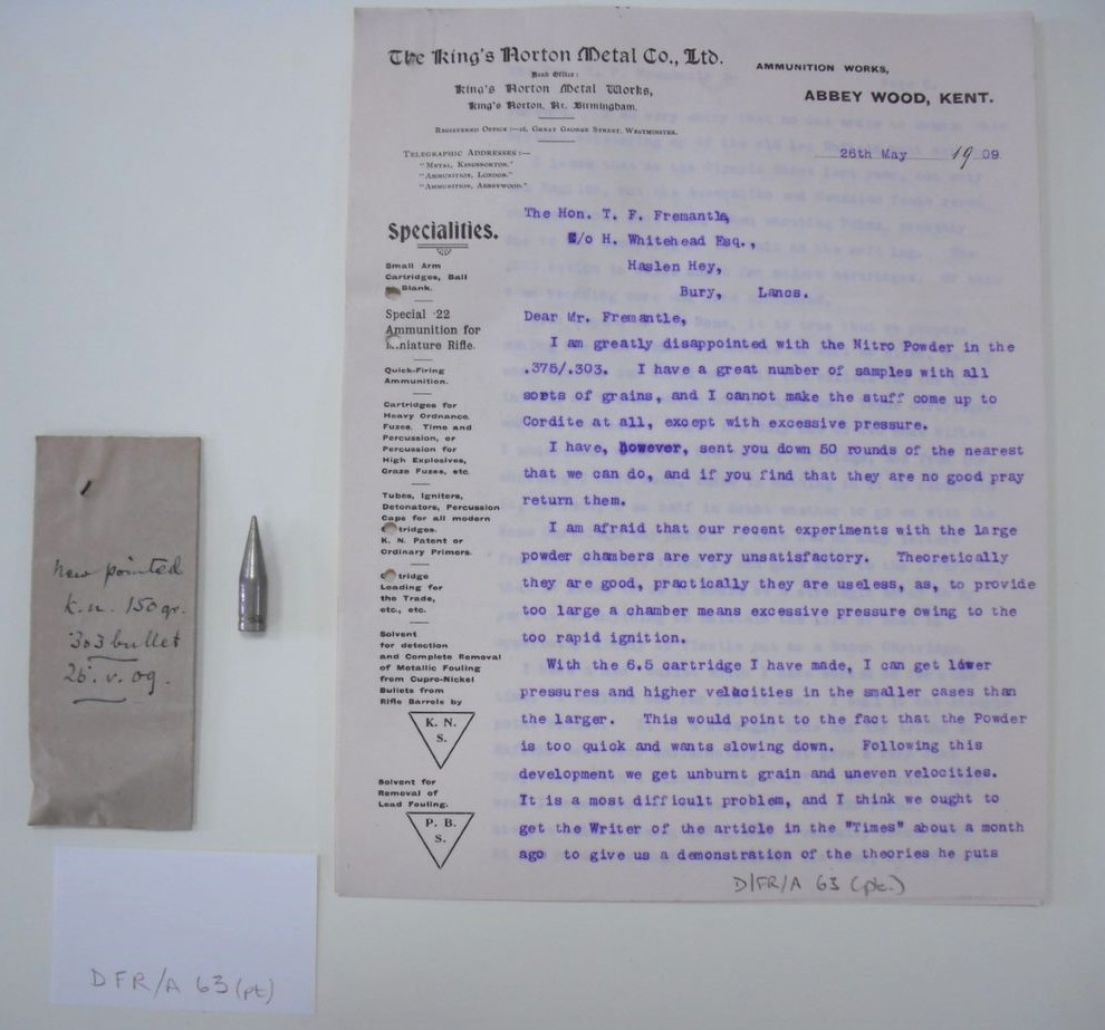
Keeping experimental bullets in a room full of flammable material isn’t a great idea, so the bullets were returned to the depositor for safe keeping.
Casebook caricatures
Mysteries of Milton Keynes
In comparison to most of our collection, our documents to do with Milton Keynes are fairly modern. What makes our Milton Keynes collection special is the sheer amount of material we have. Unlike most settlements in Buckinghamshire, we have records covering the founding of Milton Keynes and its entire history. We have building plans, minutes from meetings, and lots of fantastic photographs.

During the 1970s, many artists were commissioned to produce work for Milton Keynes and the town became a hub for the weird and wonderful. Some of this art became instantly recognisable, like Concrete Cows and Triceratops, but we have records for many more pieces that are less well known. This photo is just one of them. As an archive, we always say that we’re experts on looking after history, not experts in all of the history that we look after. We have absolutely no idea what this photo is about. It might be something to do with the National Theatre who were in Milton Keynes around the same time, but we’ve found no other evidence of the bizarre bowler hat people except for this photo.
Each week on our social media pages we share strange photos like this under the hashtag #MKMonday in the hope that someone recognises what’s happening. Many people have come forward after recognising themselves in our photos and have added their knowledge to our archive. For now, this weird photo remains a mystery.
Find out more
- Buckinghamshire Archives Socials: @bucksarchives - Facebook, @bucksarchives - X, @bucksarchives - Instagram
- Buckinghamshire Archives website
- Buckinghamshire History Festival
- Blog - Discover more curious collections from around the country and much more

